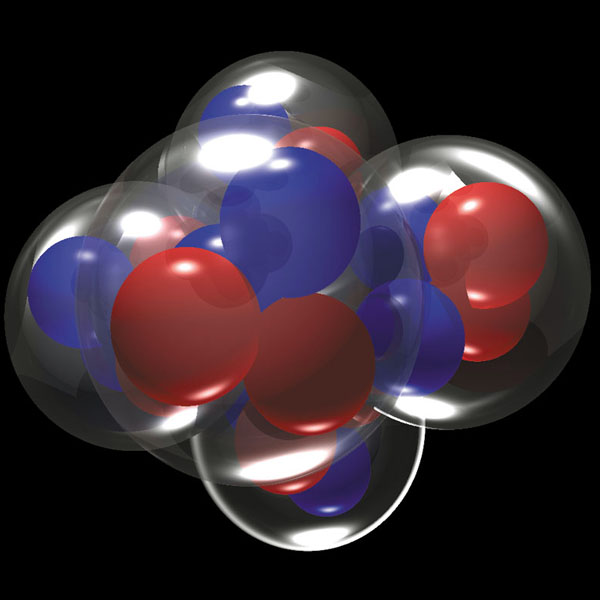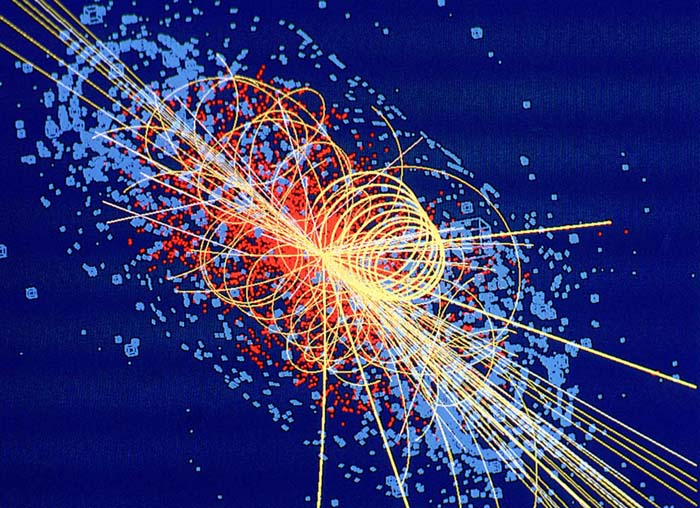Electron and Positron: The pair of electron and positron are considered as antiparticles and they have the same mass and spin but have opposite charge. The annihilate with each other when they come in contact with each other and emit photon. Dirac predicted the existence of antiparticle for electron because of a symmetry of the equations of the relativistic quantum theory of the electron. Positron was discovered in 1932 by Anderson.
Proton and antiproton: The antiproton was first discovered in 1955 and is a particle identical to the proton except for a negative charge and was produced by bombarding protons in a target with 6GeV protons thereby initiating the reaction . The KE of the bombarding proton is converted to a proton antiproton pair plus the KE of the four residual particles. Antiproton interact with proton and produces five pions and their KE like
Neutron and antineutron: Antineutron was discovered in 1956 by Cork, Lamberton and Wenzel. Both neutron and antineutron have zero charge and same mass. Antineutron are annihilated by proton or neutron with production of pions. If antineutron is not annihilated by a nucleon, it decays by the reaction
Neutrino and antineutrino: The antiparticle of neutrino is antineutrino. The spin of neutrino is opposite in direction to the direction of its motion; viewed from behind, the neutrino spins counterclockwise. But the spin of the antineutrino is in the same direction as its direction of motion; viewed from behind, it spins clockwise. The neutrion moves through space in the manner of a left handed screw while the antineutrino does so in the manner of a right handed screw. Thus neutrino possesses a “left handed” helicity; the antineutrino possesses a “right handed” helicity that is a neutrino and antineutrino differ only in the sense of their helicity. Particle accompanied by positron is neutrino () and particle accompanied by an electron is antineutrino (
). Because of the lack of charge and magnetic moment of neutrino, they hardly interact with matter except in reaction leading to inverse beta decay. The interaction is extremely week and the cross section for this process is only
. Hence matter is almost totally transparent to neutrinos.
Antimatter: Antimatter is a matter formed by the combination of antiparticles. For example, positron and antiproton can form an atom of antihydrogen. With a collection of positron, antiproton and antineutron, a world of antimatter can be created and it will be indistinguishable for ours as long as it is made of antiparticle. Antimatter will however annihilate with matter and release tremendous amount of energy when they come in contact with each other.





